CSR, ESG, double materiality, companies cannot escape the reflections on social and environmental impacts, good governance or the achievement of the United Nations Sustainable Development Goals. If the road to a business model that respects everyone and everything is still long, it is becoming more and more difficult to refuse to commit to good causes. And non-profit organizations often serve as a relay to materialize these aspirations. But how to engage with companies, raise funds and above all create rich and sustainable partnerships?
I asked these questions to Bérangère Leroy, Founder of Partenariats Durables in France, who has a long experience in the private sector and has decided to put her knowledge and skills at the service of non-profit organizations.

1 – Can you tell us more about your background?
After 10 years as an environmental safety manager in industrial SMEs, I moved to the business consulting sector. I carried out various missions: sustainable development consultant, manager of a team of consultants, pilot of clubs and networks of companies or research of sponsors and partners.
I was also involved as a volunteer with associations for social integration, and I wanted to give more meaning to my career by joining the non-profit sector. To do so, I obtained the French Fundraising Certificate (fundraising strategy and sponsorship) and I am regularly involved in events organized by the French Fundraising Association.
Today, I interconnect networks of leaders and I accompany associations in structuring their fundraising, particularly financial sponsorship.
What thrills me today? Enabling associations to raise more funds, and therefore to carry out more projects and create even more impact!
2 – Raising funds from corporations requires a very different approach than raising funds from institutional sources, such as foundations or public donors. What do you see as the major differences?
In my opinion, the first difference lies in the method. Indeed, collecting funds from companies requires building a quality human relationship upstream of the solicitation, whereas with institutional funds, the quality of the file in response to the call for projects will be crucial.
The solicitation is similar to a sharp relational approach focused on the company:
- Obtaining an appointment through a connector
- 1st meeting: discovery of the company
- 2nd meeting: presentation of the case and formulation of the financial request
Note that each meeting requires preparation and dedicated training
The second difference lies in the importance of researching very detailed information on the target companies before approaching them. The LIC scoring takes on its full meaning here. L for “Link / Proximity”, I for “Interest or sensitivity to the cause” and C for “Capacity to give”.
This scoring allows us to exclude companies from the list of targets (for example, companies with a low EBITDA, and therefore not in good enough financial health) and to prioritize the companies to contact.
The third difference is that collecting funds from companies is above all a question of attitude and state of mind. Indeed, the association must be able to adapt to the culture of the targeted company. And this is where the information gathered upstream will help greatly.
Each company has its own culture and operating mode. Some companies have very specific criteria for selecting projects. Nevertheless, beyond the existing tools, it is mainly in the connection, in the intuitu personae relationship, in the alignment of the values of the company with those of the association and in the mutual desire to build a partnership that it is played.
The process can sometimes be long before contracting, hence the importance of building a quality relationship.
3 – What questions should a nonprofit organization ask itself before entering into a financial partnership with a company?
I identify 3 essential questions that the association must try to answer:
- 2 questions during the preparation phase, i.e. when building its sponsorship strategy
- and 1 during the phase of direct approach to the company.
In any case, before approaching a company, the association must take the time to :
- Clarify its associative project: Mission / Vision / Value / Ambition
- Analyze itself: strengths and weaknesses and know its competition (cause and geographical scope)
- Build its project portfolio
- Establish your objectives and your fundraising plan
- Build your speech platform: cause speech, pitch, project documents, counterparts…
- Identify and qualify your corporate targets
During this phase, the association must be able to answer 2 essential questions:
- 1st question: “What is the impact of my action?“
Companies will pay attention to this notion. The association can highlight the direct impact (figures, testimonies of beneficiaries, etc.) as well as the indirect impact, or present the ecosystem it has set up and the resulting collaborations.
- 2nd question: “Is my business model clear and legible enough?“
This involves presenting the main expense items, the sources of funding, the consistency of management fees and the way donations are managed within the association. Being able to present the impact of 1 € invested by a company in the association is also a plus.
And once the first contacts have been made with the company and the meetings have allowed a real connection, the association must be able to answer a new question:
- 3rd question: “How does my association’s project relate to the CSR approach of the target company?”
To do this, there is only one solution: ask the company about the CSR approach it has taken and its prospects! CSR is an important lever on which an association can rely to contract a company partnership.
CSR is a vital component for companies. And this, for several reasons:
- For its reputation: the company can no longer be satisfied with intentions, it must act concretely to reduce its environmental footprint and have a positive impact on society.
- For its customers: some of them are becoming more and more sensitive to CSR and are integrating it as a criterion of choice in their purchasing process.
- For its employees: a proactive CSR strategy is essential today to attract and retain talent.
- To promote its local presence and thus be able to connect with society at large: various economic and social players.
By knowing the CSR actions already carried out, presenting a project or a program to a company is finally offering it the possibility of completing its CSR approach!
4 – What might be the main barriers for a non-profit organization to develop a corporate partnership? How can they be overcome?
I don’t identify any barrier as such, nevertheless two points of vigilance are to be taken into account:
- The first one according to me is to be helped without losing one’s soul. For this, I strongly recommend that the association establish an ethical charter, so that the practices of the companies and the values of the association will be well in line.
- The second point is to accept the idea that it takes a long, long time to sign a sponsorship agreement with a company!
It can take months, even a year. Nevertheless, it is a year during which a lasting relationship with the company will have had time to develop. Sometimes this is just because the decision-making process is complex, or sometimes it is because companies need to be reassured about the quality of the relationship that will result from a potential agreement.
5 – There are multiple different corporate partnerships, would you have some concrete examples?
Yes, I do. From a philanthropic perspective, there are three types of partnerships:
- Financial sponsorship: the company provides direct financial support.
- Sponsorship in kind: the company offers goods, merchandise (foodstuffs for example) or makes equipment or premises available free of charge.
- Skill-based sponsorship: the company makes its employees available (i.e. during their working hours) or provides a service.
6 – Finally, what would be your 3 tips for developing a business strategy?
My 3 tips for developing a sponsorship strategy: Structure, Train and Involve!
- Structure: because establishing a strategic plan allows you to ask yourself the right questions and to acquire the right tools to act with method and professionalism.
In order to be familiar with the rules and codes of such an approach, to structure one’s thinking beforehand in order to define one’s strategy and to save time, I recommend that the association be accompanied. It will then be able to benefit from a methodological framework and relevant tools: LIC scoring method, standard agreements, guide for the elaboration of an ethical charter, template for a speech on the subject, thank-you notes…
- Train: because sponsorship is above all about relationships and therefore a question of posture to be able to establish a real connection with your interlocutors.
The quality of the human relationship is at the heart of the matter. In order to be perfectly at ease in listening, questioning, talking about the cause, soliciting… you have to train and train again to be able to give priority to the relationship over the transaction.
- Involve corporate sponsors in its projects and programs: because most of the time, companies want to be considered as real partners and not as simple financiers.
Thanks to Bérangère for these very clear elements, which I hope will help you raise funds from companies in an efficient and structured way!
Do you need expertise and support for your organization? Let’s talk about it!
To keep up to date with the latest articles, follow me on LinkedIn and subscribe to the newsletter.
Copyright © 2022 E | C Consulting – All Rights Reserved – To use this content, please ask for permission in advance and cite the source if agreed.
